Thank you for your interest in this story
To continue reading this article, subscribe to the Stray Ferret for as little as £1 a week
Already a subscriber? Log in here.
23
Feb
Ten years on: why did Harrogate's 10-year masterplan never happen?

In 2015, Harrogate Borough Council published a 10-year masterplan for Harrogate that promised to transform the town’s fortunes.
A part of it lives on – just – in the form of the Station Gateway scheme, but the original version was far grander in its ambition, embracing the whole of the town centre with a comprehensive blueprint for renewal.
When the council officially adopted the plan the following May, Cllr Rebecca Burnett, cabinet member for Planning and Sustainable Transport, said that the vision for 2025 was for Harrogate to be “a leading UK destination and an important source of local employment”.
The intention was to create:
“...something that will differentiate Harrogate from its regional and national competitors, that incorporates outstanding public areas, unique conference facilities, a special blend of retail and leisure, and with integrated and sustainable transport systems.”
Ten years on, Harrogate is still waiting for this vision to be realised, so what happened? What was supposed to change, and why was the plan never delivered?
What was planned
For those who don’t recall all the details of unrealised plans drawn up by now-defunct local authorities, a summary of the main points of the masterplan may help.
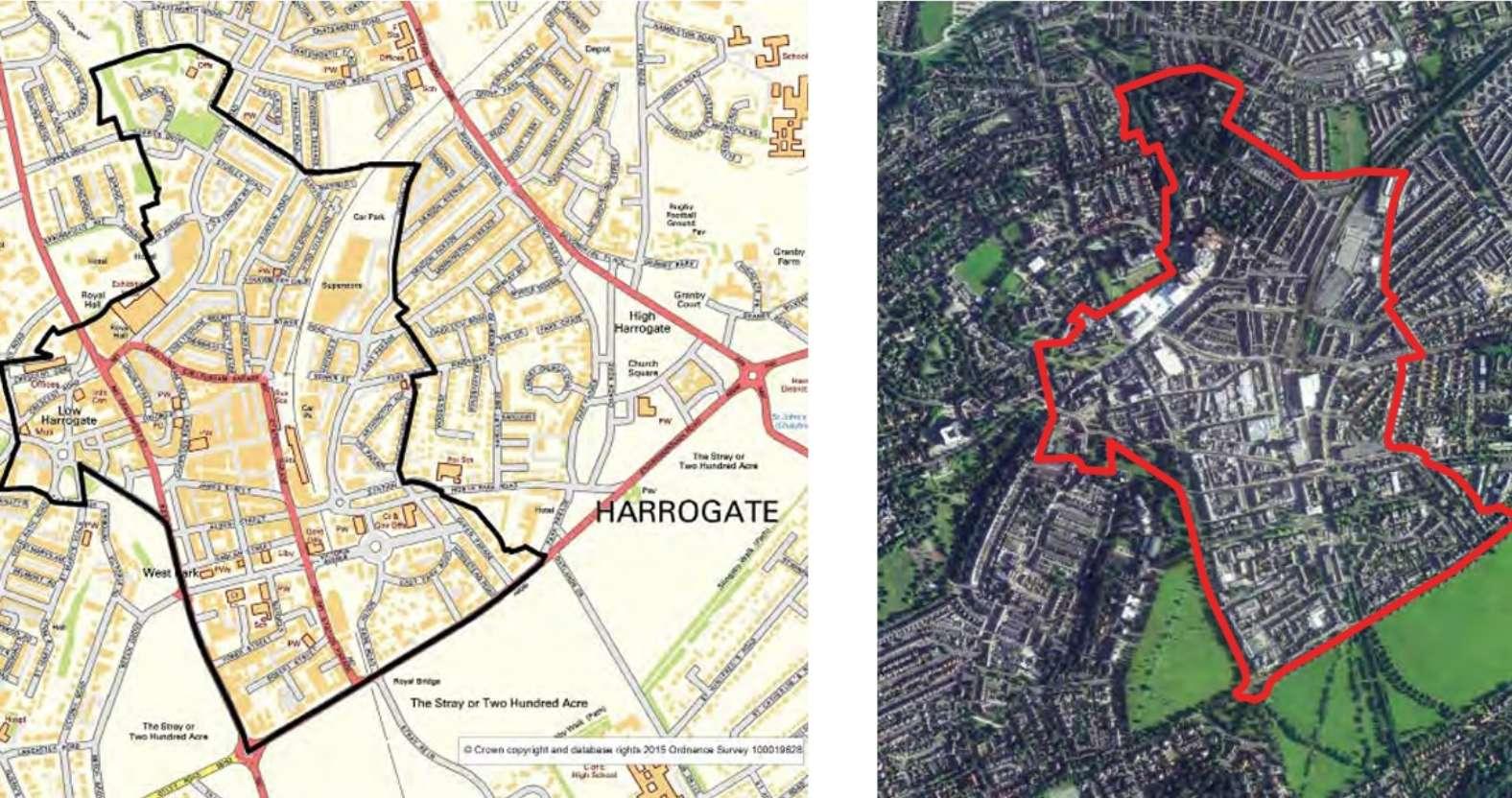
The area considered by the masterplan covered the whole of Harrogate town centre.
The 25-page Harrogate Town Centre Strategy and Masterplan laid out a comprehensive programme to physically enhance the public realm, support business tourism, promote sustainable travel, and create an integrated transport hub.
Cambridge Street would be beautified with new planting, Oxford Street would get a new open-air performance space, and James Street and Princes Street would be pedestrianised.
The parking and signage in Princes Square would be “rationalised”, with wider pavements and new trees.
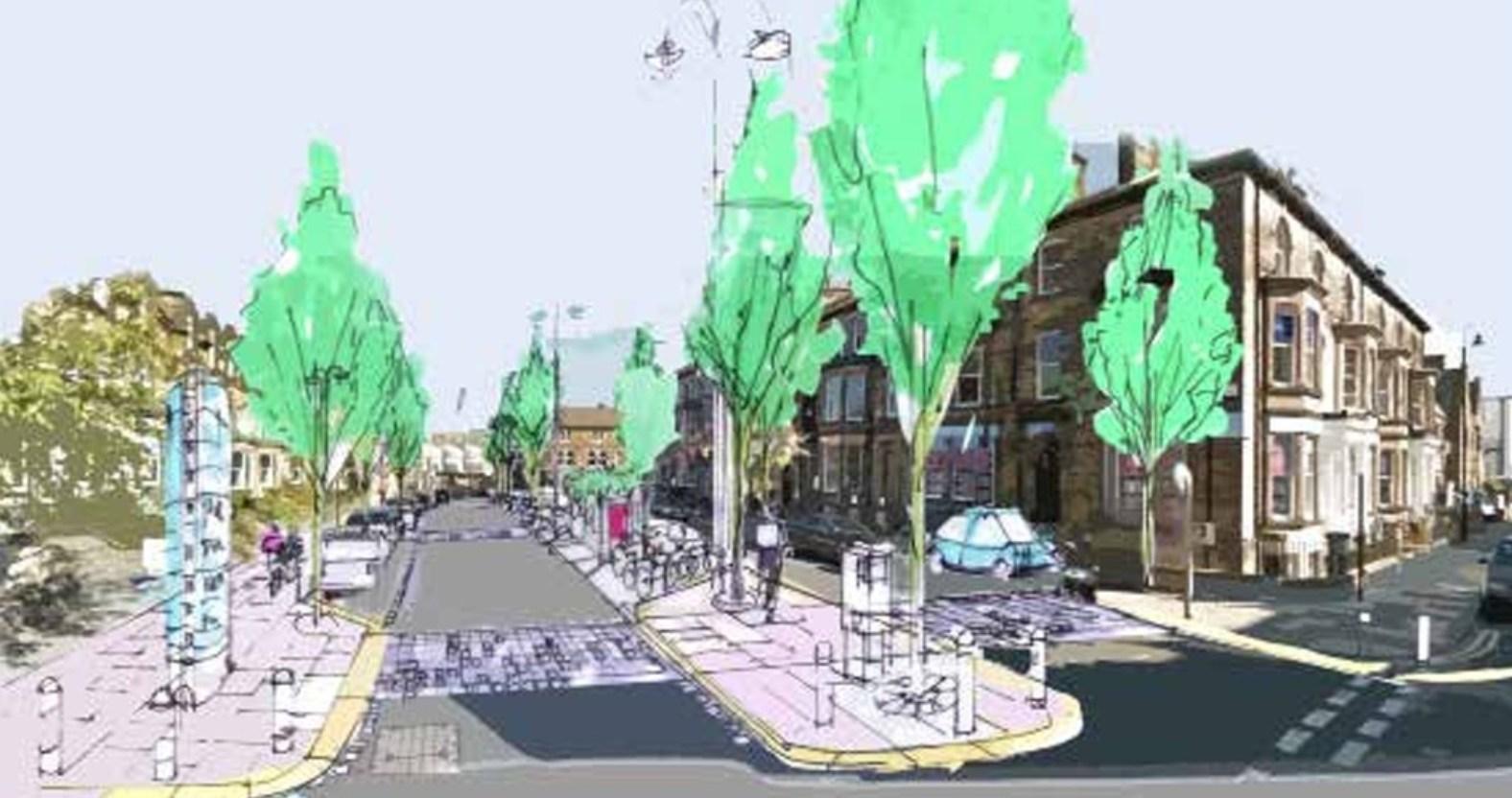
Princes Square
The old Crescent Gardens council offices would be refurbished and redeveloped, possibly with a new extension, and the gardens themselves improved.
At Harrogate Convention Centre, Hall Q [the one beneath the centre’s auditorium] would be redeveloped with a new visitor attraction, and Hall A [the one to the left of the Royal Hall’s main entrance] would be demolished to create a through-route for service vehicles and an enhanced setting for the Royal Hall.
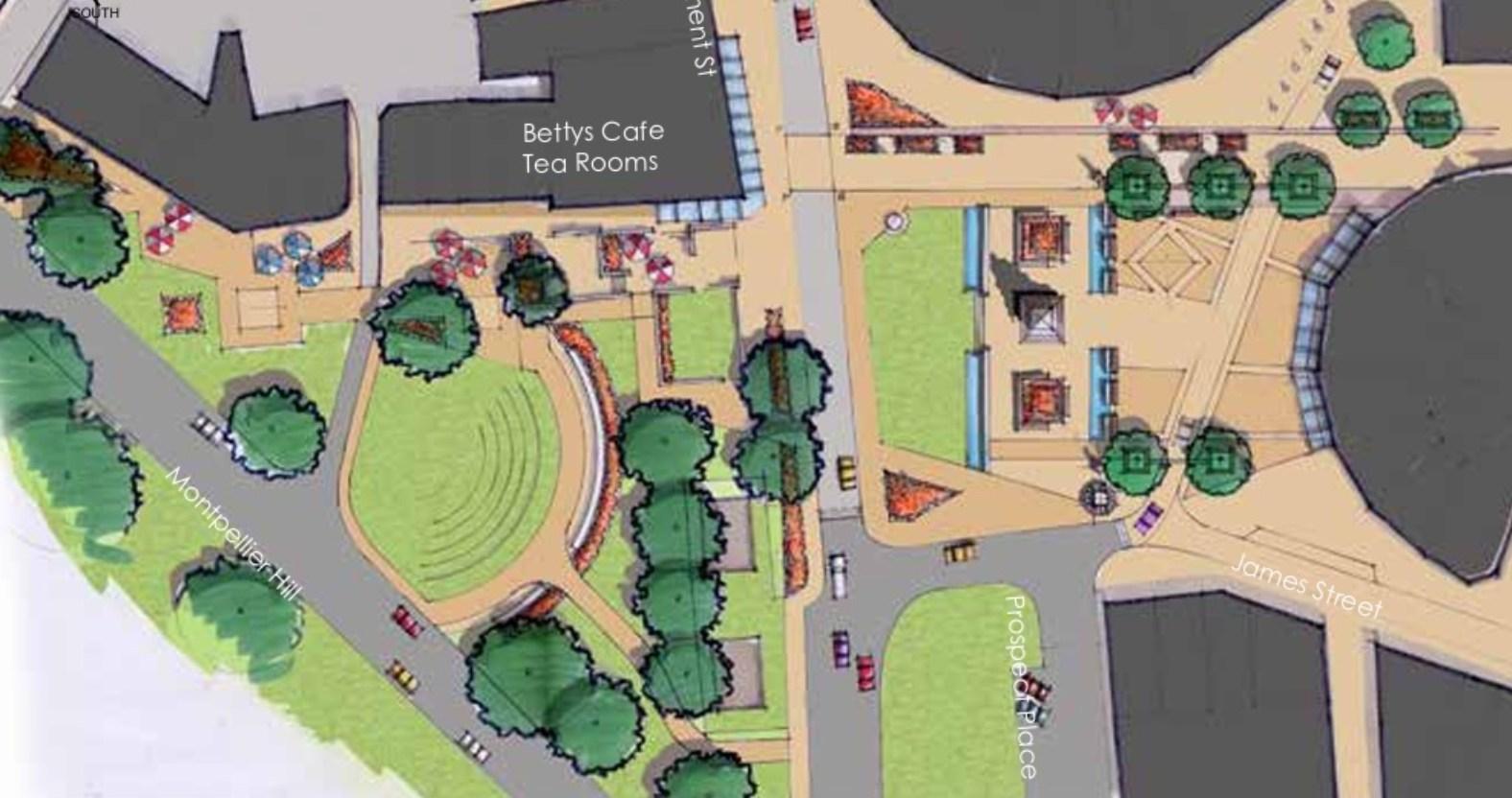
The scheme would see a tiered performance space in Montpellier Gardens.
The ability of Prospect Square (where the Cenotaph stands) to realise its potential as an iconic public space was, said the document, compromised by the “visual clutter” of parked cars, the environmental impacts of the A61 (i.e. West Park/Parliament Street), and “indistinct pedestrian routes across the space that weaken the links between the town centre’s retail core and [...] the Montpellier Quarter”.
It recommended banning cars from Cambridge Crescent and Montpellier Parade, improving the pedestrian crossing on Parliament Street, creating “spaces for informal recreation” around the war memorial, and – perhaps most intriguingly – creating a tiered space for events at Prospect Gardens and a terraced walkway down Montpellier Parade.
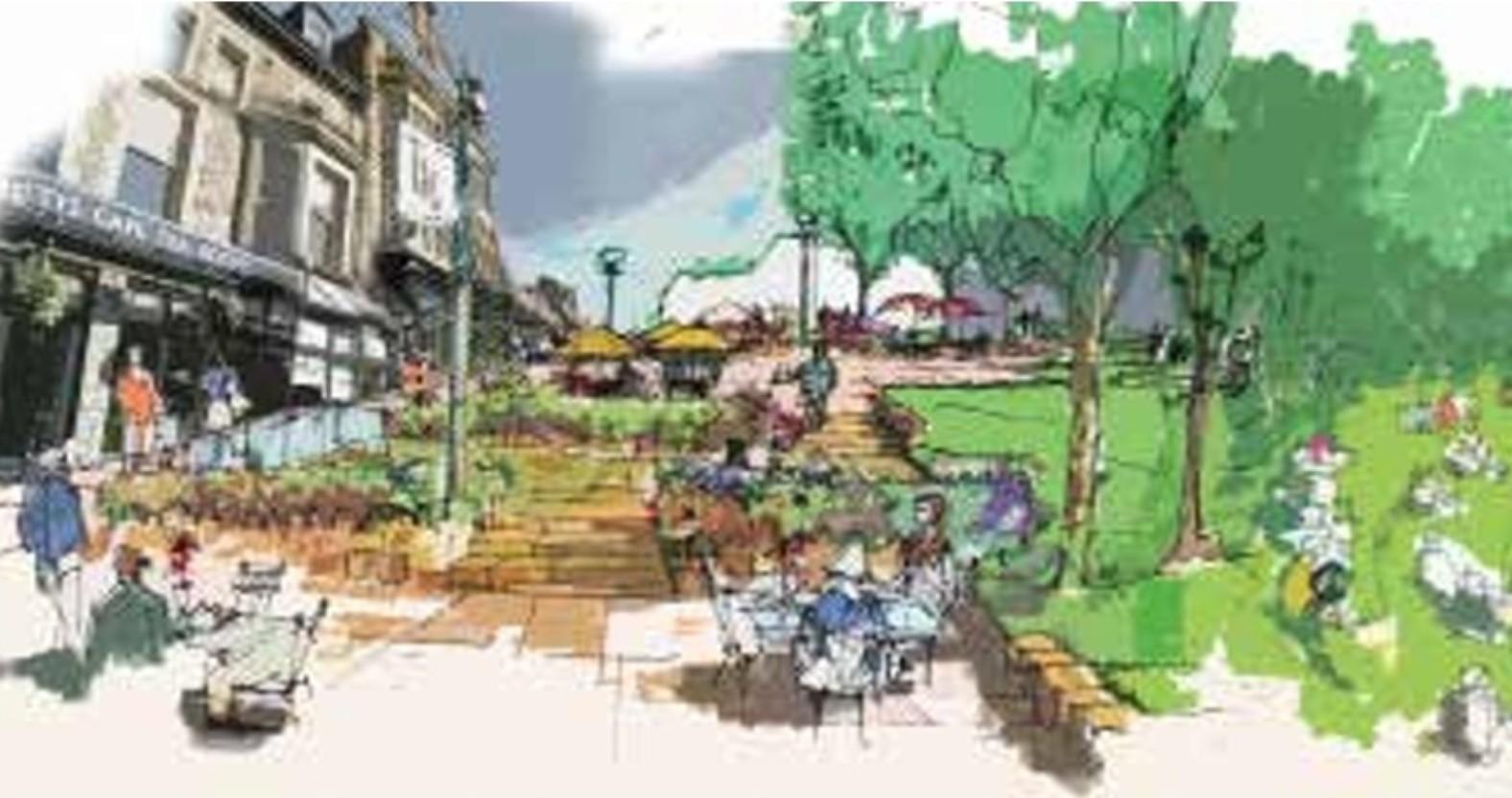
The terracing on Montpellier Parade, next to Bettys and the Blues Bar.
The railway and bus stations would be integrated with each other and with new cycling infrastructure, and across the road, Station Square would receive special attention. It was described as suffering from a “disjointed appearance that makes it difficult for visitors to orientate themselves on arrival”.
But it was deemed to have “considerable potential to provide a key gateway to Harrogate”, so was earmarked for a garden redesign with a water feature, a multifunctional events space, and new visitor information point.
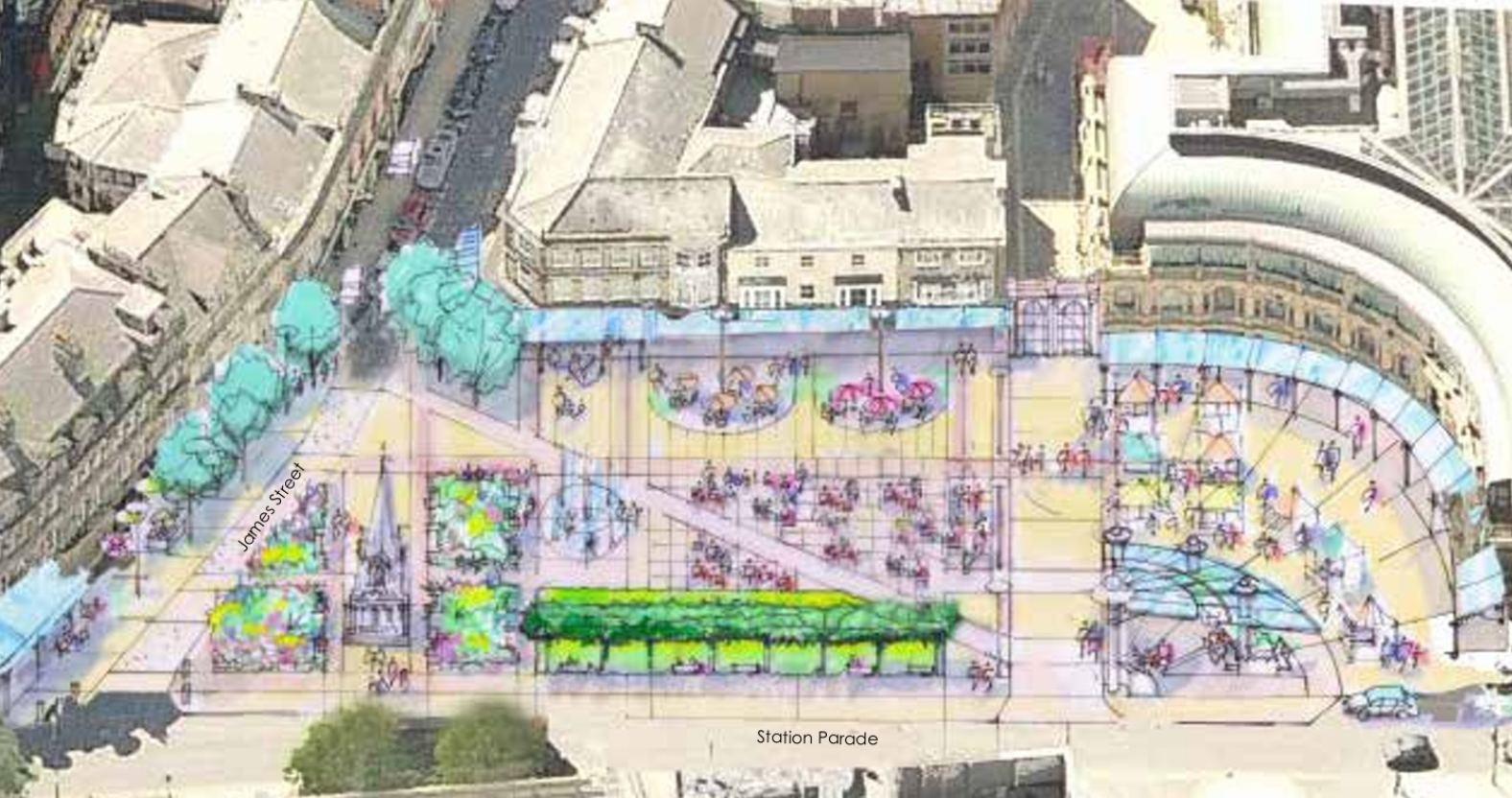
The remodelled Station Square, complete with water feature.
This part of the plan later morphed into the Station Gateway proposal, which has since been watered down amid objections and legal challenges, but is the only major component of the 2015 masterplan that has survived in any form.
The Exchange and Copthall Bridge House came in for criticism because “the style and massing of these buildings are not in keeping with the rest of the town centre and they appear dated”.
Improvements included “redevelopment where feasible”, and this is where the masterplan arguably racks up its sole ‘win’: Copthall Bridge House – now renamed simply Copthall Bridge – has been comprehensively redeveloped at a cost of £10.5 million by Leeds firm Workwell, and is due to be officially opened next month.
Covid not to blame
As for the rest, it may seem easy to see why it was never realised – surely Harrogate Borough Council spent a few years after 2015 getting their ducks in a row, and then the plans were blown out of the water by the Covid pandemic in 2020?
But that interpretation of events doesn’t ring true, since the planned timeline of the masterplan envisaged that some key components – Station Square and Prospect Square, Oxford Street and Cambridge Street – would be completed before 2020.
Others – such as Parliament Street and Cheltenham Parade, James Street and Princes Street, the Exchange and Station Bridge, Crescent Gardens and HIC – would be completed in 2020.
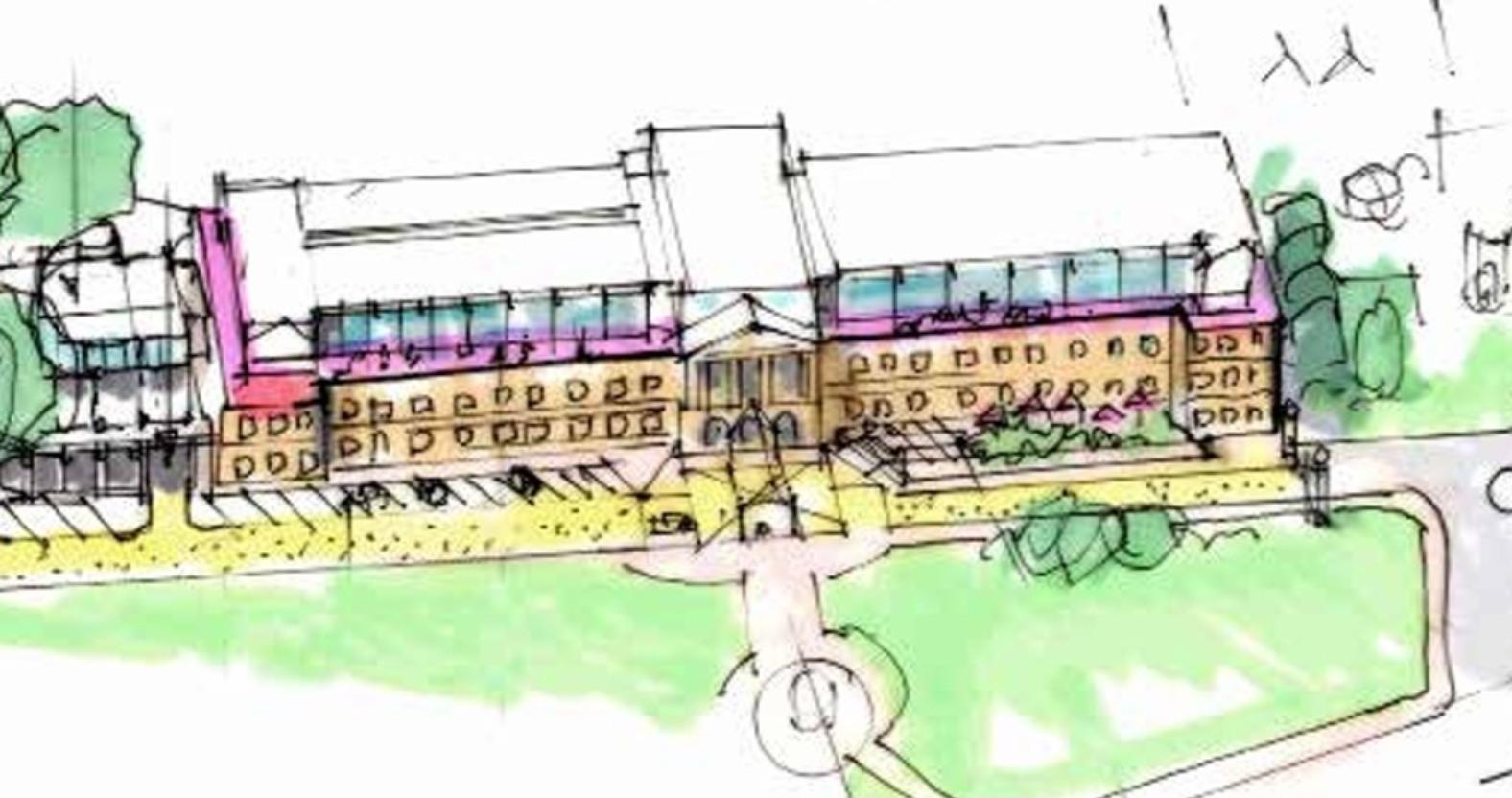
The changes to Crescent Gardens were considered 'high priority'.
Remarkably, just one year was pencilled in for the planning, funding and procurement stage of almost all 13 of the schemes proposed – a guestimate that now seems giddily optimistic.
Why was it shelved?
So why did so little happen to turn the dream into reality?
Malcolm Margolis of Harrogate Cycle Action remembers the masterplan well – he brought it to the attention of the Stray Ferret – but he is stumped when asked why it wasn’t enacted. He told us:
It’s very hard to explain. They got the strategy down on paper, but was there ever a serious intention to implement it?
We were very aware at the time that it seemed to have been put on a shelf and forgotten about.
We asked four ex-Harrogate Borough councillors for more information, and three drew a blank, one saying:
It’s a good question. I don’t think I’ve got an answer.
Only one of them could shed any light on the matter. Paul Haslam is now an independent representing Bilton and Nidd Gorge on North Yorkshire Council, but in 2015 was a Conservative representing Bilton on Harrogate Borough Council. He voted to adopt the masterplan and has subsequently been an enthusiastic supporter of the Station Gateway scheme. He said:
The challenge of it was that there was no money behind it, so it was really an aspirational document. So funding – and the lack of it – was part of the issue. And the timeline was awfully over-ambitious.
To be honest, I would say that the people who were supposed to be championing it probably didn’t champion it hard enough.
What probably also happened is that other things came along and overshadowed it, for example the relief road in 2016. Certainly, that took over a lot of what I was doing – I spent nearly all my time campaigning against it.
The lesson
If a lesson can be drawn from this episode, now may be an opportune time to learn it. North Yorkshire Council recently announced its intention to draw up Town Investment Plans for 30 places across the county, including Harrogate, Ripon and Knaresborough.
Discussing the matter at a meeting of Harrogate District Chamber of Commerce last month, Richard Flinton, the chief executive of North Yorkshire Council, said:
We know that there has not been a masterplan for Harrogate and, if you like, a formal investment plan into a vision of what we want for Harrogate, for some time.
We are very keen to address that this year and to engage businesses in that process.
It’s highly doubtful that the 2015 plans will be dusted off and given a second chance – times are harder in 2015 than they were a decade ago, and there’s not much heft in the public purse – but even a plan with scaled-down ambitions will surely cost the council money.
Malcolm Margolis said:
I don’t remember how much the 2015 masterplan cost, but it wasn’t cheap. None of the key objectives have been delivered.
A new plan is needed – the old one is now out of date – but there’s no point investing in another plan unless the council commits to delivering it.
0